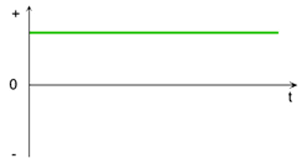Jagran Josh
Difference Between AC And DC: Here, students can check the differences between AC and DC. AC stands for Alternating Current and DC stands for Direct Current. Check the key dissimilarities between alternating current and direct current along with their definitions, usage, and more.
Difference Between AC And DC: Jagran Josh brings to you yet another important difference between AC and DC from Physics. This time we are going to inform you about some key dissimilarities between Alternating Current and Direct Current. Also, find attached some important information related to the topic which will add to your knowledge and help you solve various numerical problems based on understanding of the topic and practical applications.
But before we jump onto knowing the differences between AC and DC, let us first understand AC and DC, their usage, importance, and more details for better understanding. Check the definitions below to clear your doubts about AC and DC.
What is Alternating Current (AC)?
AC stands for alternating current. As the name suggests, AC is the type of current where the electric charge flows while changing its direction from forward to backward periodically. Its graph representation makes a sine waveform called a sine wave.
AC is the most widely accepted form of electric current. It is easy to generate and carry to large distances, which results in increased consumption and usage. AC is generally used in offices, houses, buildings, and such places where there is a heavy requirement of electric current. The sine wave is a curved graph that shows electric cycles measured per second, called Hertz (Hz).

What is Direct Current (DC)?
DC stands for Direct Current. Unlike AC, it flows only in a certain direction and does not change periodically. The direct current travels in a single line at a steady voltage but alternating current does not have a steady voltage, given the continuous change in direction. DC is most widely used for charging purposes and for work that gets completed in a shorter duration of time. For example: mobile phones, TV screens, all your electronics that require charging through a charger, and more.
The graphical representation of DC is obviously a straight dotted line that passes through plus and minus signs. In this case, the electrons move from negative to positive direction.

How can AC be converted to DC?
Inorder to convert AC into DC, a rectifier is used. First the electric current passes through a transformer, it then gets converted into DC by using a rectifier. The rectifier is a device that changes the electric current and is responsible for converting AC into DC.
Similarly, DC can be converted into AC by an inverter.
Advantages of AC
Alternating current can be useful in the following ways:
- Can be generated easily
- Can be converted into DC easily
- Can be used over large distances
- Less expensive in comparison to DC
- Less amount of loss of energy takes place
- Provides higher efficiency
Advantages of DC
Direct Current can be useful in the following ways:
- Can charge batteries, makes electronic life possible
- It is safer in comparison to AC
- Supply is more powerful than AC
- High energy efficiency
- Noise-free and less power loss
Difference between AC and DC
Find here the differences between Alternating Current and Direct Current. These differences will clear all your doubts regarding AC and DC.
|
Alternating Current (AC) |
Direct Current (DC) |
|
The flow of electric current is constantly changing. |
The electric current flows in one direction. |
|
The voltage is not steady |
Voltage is steady |
|
It can be transferred over long distances |
It cannot be transferred over long distances |
|
Less loss of energy |
It loses electric power |
|
The frequency of AC depends on the country |
The frequency of DC is zero |
|
Electrons keep changing their directions |
Electrons move only in one direction |
|
Source of availability is AC generators |
Source of availability is battery, electrochemical cells, or storage devices |
|
AC is used in refrigerators, washing machines, and such electric motors |
DC is used in mobile phones, flat screens, TVs, etc |
Also Read:
Differences between Interference and Diffraction
#Difference #Key #Dissimilarity
